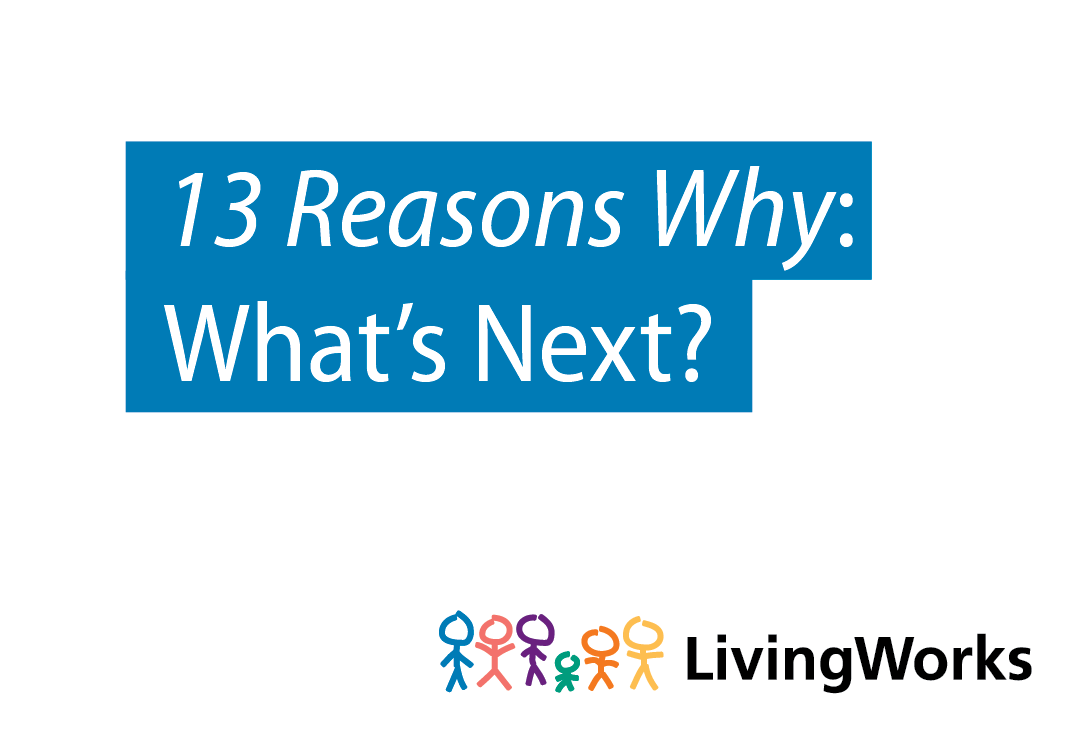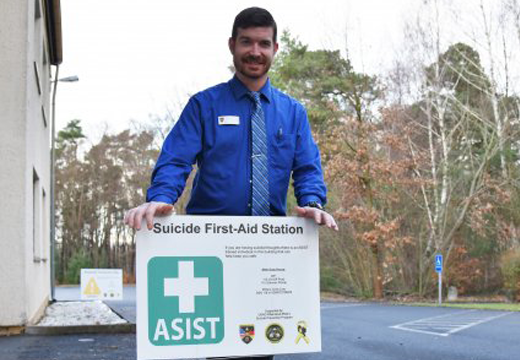Friday, June 16, 2023 | LivingWorks Education

By now, virtually every parent and educator has heard about 13 Reasons Why, the popular Netflix drama that tells the story of high school student Hannah Baker and her decision to take her own life. The series has fuelled controversy, generated discussion, and prompted many questions: is the subject matter—including relationship troubles, cyber bullying, sexual assault, reputation slurs, depression, tone-deaf adults, self-doubt, and aloneness—too disturbing to talk about with youth? Do these things cause or contribute to suicide, or are they unrelated? Did the producers go too far in their portrayal of Hannah ending her life, and did they overlook the risk of suicide contagion as a result of the series? Is the positive and hopeful focus by the cast, producers, and mental health professionals in Beyond the Reasons, 13 Reasons’ companion documentary, overshadowed by the series’ dark themes and the surrounding controversy?
Whatever our answers may be, 13 Reasons Why is here to stay. It’s the most widely discussed Netflix series based on social media impressions, and a second season is in the works. Though the story is fictional, for many people, the issues it explores are very real. Young people are talking about and reacting to it, schools are deciding what measures to take, and some crisis lines are even reporting increased call volumes. We have an opportunity here not just to weigh in, but to make a difference. It is vitally important that we channel the attention and discussion around 13 Reasons Why into positive dialogue and meaningful action.
We need dialogue and action to engage with youth about their lived experience and their own reasons why they might be thinking about suicide. We need to create spaces and environments where youths, parents, and educators feel comfortable talking about these experiences directly, not going around them. And when these dialogues lead us to a young person who is actively considering suicide, we need to be prepared with comfort and ability. We need to be open to youths’ turmoil and uncertainty between dying and living, going beyond their reasons to die and helping them explore their reasons to live.
These are difficult conversations to have, but they are not impossible—in fact, virtually anyone can learn a set of skills to talk about suicide and carry out a helpful intervention if necessary. Evidence shows that skills training is one of the most effective ways to prevent suicide, yet a 2017 study confirmed earlier findings that many school staff are underprepared to talk about this issue.
At LivingWorks, we’ve been providing training for over 30 years, and we’ve witnessed the difference it makes. We’ve heard the stories and seen the published evidence that skills training breaks down stigma, makes suicide easier to talk about, helps prepare people to intervene, and best of all, helps make differences between dying and living. Our safeTALK program lasts three hours, and has been shown to make a positive impact for youth as well as adult participants. Our two-day ASIST workshop is a recognized effective practice ideal for preparing people to be life-supporting helpers. Both programs are excellent ways of preparing to help save a life from suicide.
Our colleagues in the suicide prevention field have developed a number of thoughtful 13 Reasons Why discussion resources to get the conversation started. We recommend the talking points developed by Suicide Awareness Voices for Education and the Jed Foundation, Teen Line’s help for parents and educators, and the 13 Reasons Why Webinar by the American Foundation for Suicide Prevention, American School Counselor Association, and National Association of School Psychologists. Oxford High School in Oakland even launched a project called 13 Reasons Why Not, in which students publicly explore their reasons for choosing life in times of distress. Finally, Beyond the Reasons is available on Netflix and features commentary from the actors, producers, and mental health professionals as they discuss their hopes and intentions for the series.
Once the dialogue is underway, training is next logical step. It helps us—as parents, community leaders, caregivers, and educators—proactively take steps to keep our youth, schools, and communities safer from suicide in the long term. LivingWorks has thousands of trainers across North America ready to provide evidence-based training that will prepare you to talk through youths’ “reasons why” and reach their “reasons beyond.” Our trainer network is ready to step up. Others in suicide prevention are too.
We invite you to tell us the reasons you’re reaching out to build suicide safety in your school or community, and how we can help. Please contact us at reasons@livingworks.net.
Richard Ramsay
President Emeritus
LivingWorks Education
Download this release as a PDF.
